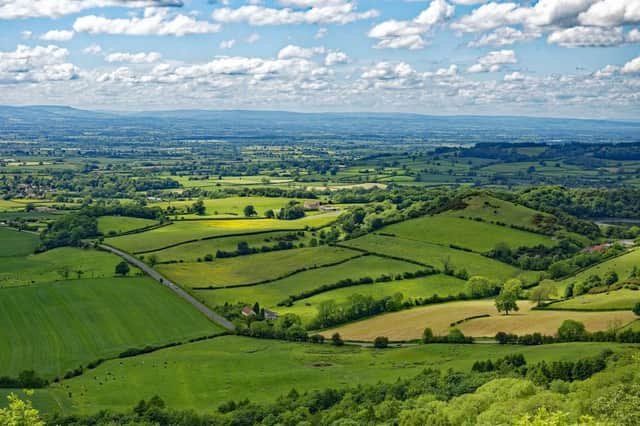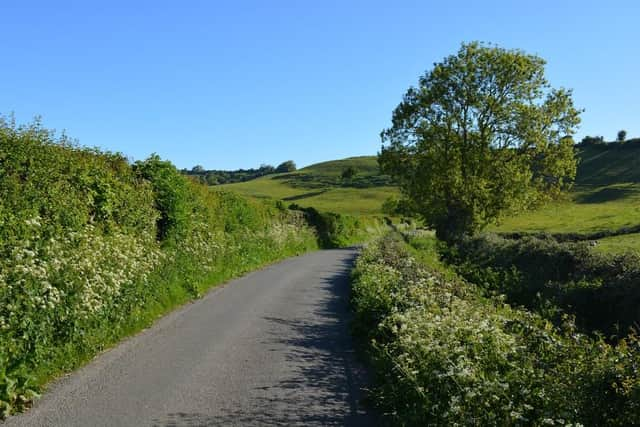Conservation and biodiversity in Yorkshire with help from BASC


Post-war clearances left hedgerows waning, falling in favour of increasing field sizes in the quest for more efficient farming practices. The result was a 50% reduction in Britain’s network of hedges since the second world war. In spite of this, half a million kilometres of hedgerows still remain across the country.
Hedgerow heroes
What of our precious hedgerows for the future? Who will look after them?


Right up there in the mix of hedgerow heroes are shoot managers and or farmers who have a shoot on their land.
Every year an estimated 7,000 hectares of hedgerows are maintained by shoots. Their labour is equivalent to 790 full time conservation jobs, such is the effort involved.
Carbon capture
The question stands, why are hedgerows so important? A source of autumnal plunder for keen foragers in search of fruit for blackberry crumbles and gins, yes.
But over and above this is the big ‘C’. Carbon.
We hear so much about the importance of carbon capture on a day-to-day basis. Yorkshire plays a fundamental role in carbon capture with the peatland of its vast grouse moors locking in 61,000 tonnes of the stuff every year.
In lowland-terms, Yorkshire’s rolling hedgerows offer a further carbon-bashing opportunity. A hectare of hedgerow can sequester as much as 131.5 tonnes of carbon per year.
So, taking into account the 7,000 hectares of shoot-managed hedgerows, that’s 920,000 tonnes of carbon being locked up annually by those actively managing hedges for gamebird cover.
That is equivalent to the total annual greenhouse gas emissions of 730,000 passenger cars.
Biodiversity benefits
Yorkshire’s hedgerows are not just a key carbon locker but also deliver on biodiversity too. Particularly when coupled with gamebird cover crops, the combination provides vital shelter, food availability and nesting cover for a range of farmland songbirds.
Cover crops are used by shoot managers to protect gamebirds from aerial predation whilst offering a naturally-occurring food source.
Perennial crop species are selected to offer a mosaic of nesting habitats, not to mention being attractive to insects and delivering seeds and grains long into the winter months.
Wild bird cover crops are such an effective driver of biodiversity that songbirds have been found to increase in population density by up to 100 times per hectare of cover crop compared to areas of cereal crops, stubble or set-aside.
Making the link
But this is about hedgerows, right, not cover crops? Studies have found that farms which also give home to a game shoot have an average of 27% more hedges across their acreage than those without a shoot.
In turn, grass margins tend to be 24% wider of farms with a shoot and research shows that farm shoots deliver significantly more vital wildlife margins set next to hedges, such as wild bird cover crops.
Looking to the future
The CPRE, or The Countryside Charity, released a report on the 6th September which cited the value of hedgerows to both the economy and the environment.
The report found that increasing Britain’s hedgerow networkby 40% by 2050 would create 25,000 jobs over the next 30 years and return almost £4 for every £1 invested.
By planting more hedgerows and looking after those that already exist, the amount of carbon already locked in by these living boundaries will be increased. Flood risk reduces and protective habitat for declining species such as the hazel dormouse, hedgehog, and brown hairstreak butterfly will increase.
Playing our part
Yorkshire’s shooting community have a key role to play in the CPRE’s #40by50 campaign through their management of existing hedgerows and the planting of new ones.
This contribution will be echoed across the rest of the country, with shoots currently curating 12% of the UK’s rural land annually, equating to almost two million hectares. That’s the best part of 5,000,000 football pitches.
So get behind your local shoot, and we urge you to get behind the CPRE’s #40by50 campaign to show your support to reinstating the county’s hedgerow network. Together, we can all be hedgerow heroes.
Find out more about the CPRE’s #40by50 campaign here.
And find out more about the work of British Association for Shooting and Conservation here.